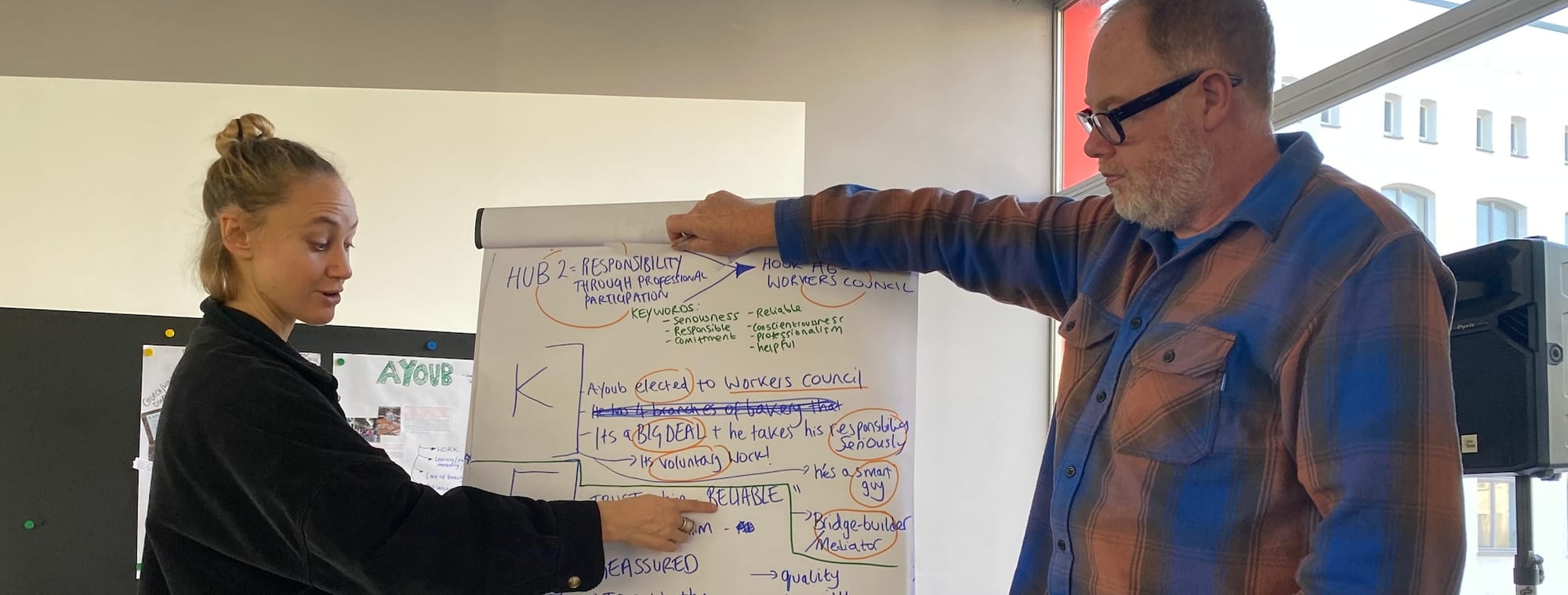In today's fast-paced digital environment, it’s hard to cut through the noise and drive meaningful behaviour change.
We’re happy to discuss the merits of various behaviour change models (from Nudging to Fogg). And to help find the right approach for you.
Is your goal influencing public policy, promoting health initiatives, or advocating for environmental action? Success hinges on the power of your campaign narrative and how your audience reacts to it.
What are the essential components of an impactful campaign? How do you bring about measurable change for good?
Check out some of our recent projects, such as tackling racism and discrimination or improving sustainability to see our approach in action.

1. Understand Your Audience
Who are you trying to reach? How do they speak? What keeps them awake at night? Once you have a deep understanding of what makes them tick, you’re well on your way.
At Restless, we take an audience-first approach to all our communications. The clues are there: surveys, research and social analytics can all give helpful pointers.
Don’t forget to speak to colleagues and fellow campaign stakeholders. Each will have insights to help bring your audience to life.
And, the profiles you create will help to shape your messaging and narratives so you can create a campaign that resonates.
2. Define Clear, Achievable Goals
What do you want your audience to think, do, or say differently as a result of your campaign? Knowing where you want to get to is vital (and often overlooked).
Ask yourself, “What would success look like?”
Always set SMART objectives: Specific, Measurable, Achievable, Relevant, and Time-based. The more detail you have at the outset, the better direction your strategy will have.
Make sure you have a way to track progress towards those goals. If behaviour change is the ultimate goal, what proxies (such as engagement on social media) can help on the way?
3. Craft a Compelling Narrative
Storytelling is where the magic happens. People are hard-wired to relate to stories. They help create an emotional bond between you and the reader.
Your narrative must resonate emotionally, but it should also be compelling. People make decisions for emotional reasons and post-rationalise their actions later.
Make sure you share the important facts on the way.
Stories should be about people. Not things, or ideas. These can be real-life stories, case studies, or testimonials. It will make your campaign relatable and memorable.
A content strategy with a strong narrative can inspire, motivate, and drive change.
4. Choose the Right Channels

Where does your target audience spend their time online? You need to be where they are. Your work has no chance of winning hearts and minds if you’re not in the right place at the right time.
That might be on a specific social media platform, through email newsletters, or traditional media. It depends on who your target audience is.
But, thanks to Step 1, we already know everything we can about them.
Still, there’s no one-size-fits-all approach. So, a multi-channel strategy means your message is seen and heard by as many relevant eyes and ears as possible.
5. Craft a Compelling Call to Action
To be successful, your behaviour change campaign needs those in your target audience to do something differently. So you should tell them what that should be.
This is your call to action. Or CTA in marketing lingo.
For any piece of effective communication, only ever ask your audience to do one thing. Otherwise, your efforts will be crushed by the tyranny of choice.
Make your CTA a command. Use active verbs and keep it simple: Click here, download now, or follow us on social. Try adding a deadline. Give them a date to act and create a sense of urgency.
Your call to action should be something readers simply cannot ignore.
6. Mobilise and Engage

If you want to have a big impact, you’ll need to break out of the bubble of your closest friends and contacts. It helps to build a broad base of support for your campaign in advance of launch.
Recruit influencers, similar organisations, community leaders, and volunteers to boost your message and foster a sense of community around your cause.
7. Measure and Adapt
It’s important to have a test-and-learn attitude. You should allow space to tweak your message and improve your strategy.
At Restless we’ve developed the Lean Analytics Cycle to provide constant feedback. This experimental loop allows us to strengthen a campaign while it’s still running.
You should do similar. If something is not working, ditch it and move on. But when you find a particular narrative, graphic or approach that works find ways to exploit it further.
Become an analytics geek. Track your campaign performance across all channels, using metrics like engagement rates, conversion rates, and reach.
None of this will be wasted as it can feed into your next behaviour change campaign.






